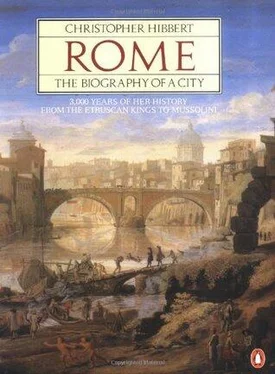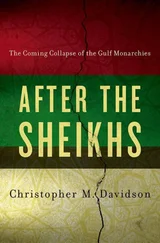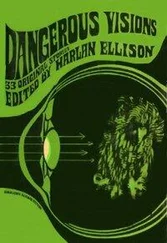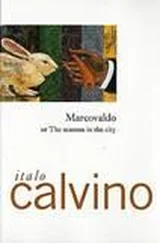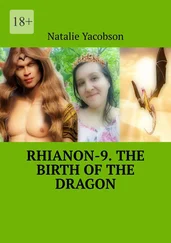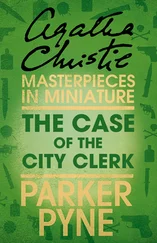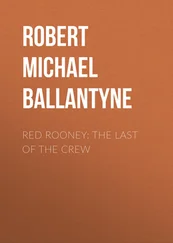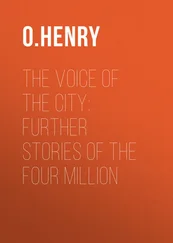Christopher Hibbert - Rome. The Biography of the City
Здесь есть возможность читать онлайн «Christopher Hibbert - Rome. The Biography of the City» весь текст электронной книги совершенно бесплатно (целиком полную версию без сокращений). В некоторых случаях можно слушать аудио, скачать через торрент в формате fb2 и присутствует краткое содержание. Жанр: Культурология, Искусство и Дизайн, на английском языке. Описание произведения, (предисловие) а так же отзывы посетителей доступны на портале библиотеки ЛибКат.
- Название:Rome. The Biography of the City
- Автор:
- Жанр:
- Год:неизвестен
- ISBN:нет данных
- Рейтинг книги:3 / 5. Голосов: 1
-
Избранное:Добавить в избранное
- Отзывы:
-
Ваша оценка:
- 60
- 1
- 2
- 3
- 4
- 5
Rome. The Biography of the City: краткое содержание, описание и аннотация
Предлагаем к чтению аннотацию, описание, краткое содержание или предисловие (зависит от того, что написал сам автор книги «Rome. The Biography of the City»). Если вы не нашли необходимую информацию о книге — напишите в комментариях, мы постараемся отыскать её.
Rome. The Biography of the City — читать онлайн бесплатно полную книгу (весь текст) целиком
Ниже представлен текст книги, разбитый по страницам. Система сохранения места последней прочитанной страницы, позволяет с удобством читать онлайн бесплатно книгу «Rome. The Biography of the City», без необходимости каждый раз заново искать на чём Вы остановились. Поставьте закладку, и сможете в любой момент перейти на страницу, на которой закончили чтение.
Интервал:
Закладка:
18. The PALAZZO DEL DRAGO, formerly the Palazzo Albani, in the Via delle Quattro Fontane was begun in the seventeenth century by Domenico Fontana and finished by Alessandro Specchi who was responsible for the cornice and the tower. Since the Second World War it has provided premises for the British Council.
19. The VILLA TORLONIA, formerly Villa Albani, off the Via Salaria, was built between 1743 and 1763 by Carlo Marchionni for Cardinal Alessandro Albani. The bulk of the Cardinal's collection of classical sculpture was removed by Napoleon to Paris and recovered only in part in 1815. The villa was bought by Prince Alessandro Torlonia in 1866. The capitulation of Rome was signed here in 1870. (For the VILLA TORLONIA off the Via Nomentana see note 3, Chapter 17.)
20. The Capuchin Church of S. MARIA DELLA CONCEZIONE in Via Vittorio Veneto was built in about 1626 by Antonio Casoni of Ancona for Cardinal Antonio Barberini, a brother of Urban VIII, whose tombstone before the main altar bears the inscription in Latin, ‘ Hic jacet pulvius cinis et nihil ’, ‘Here lie dust, ashes and nothing’. The face of Satan in Guido Reni's St Michael Trampling on the Devil is said to be a portrait of the artist's bête noire, Innocent X. The five chapels of the adjoining crypt are a cemetery for which the earth was brought from the Holy Land. When the cemetery was full, the bones and skulls of 4,000 friars were dug up to decorate the walls and vaults and to make room for further bodies in the earth. There are also the skeletons of children, young sons of noble families, since burial here was considered a high honour and could be granted as a special privilege.
21. The PALAZZETTO ZUCCARI in Via Gregoriana was built as an academy of painting by the younger of the two Zuccaro brothers, Federico who spent part of his life abroad and painted both Queen Elizabeth and Mary Queen of Scots. The brothers were leaders of the Roman Mannerist school of painting. A loggia, attributed to Juvarra, was added in 1711 for Maria Casimira, Queen of Poland, who went to live here. The palazzetto later became the premises of the Hertzian library, specializing in the history of art.
22. The CAFFÈ GRECO, founded in 1760 by a Levantine, soon became the most renowned meeting-place in Rome. The American sculptor, William Wetmore Story, introduced Hans Andersen to Elizabeth Barrett Browning here in 1861. The house opposite used to be a boarding-house much favoured by English visitors, including Thackeray and Tennyson. Keats's friend, the painter Joseph Severn, who was appointed British consul in Rome in 1860, died here at the age of eighty-five in 1879.
23. The house, now known as the KEATS–SHELLEY MEMORIAL, was kept as a cheap lodging-house by a Signora Petri. The small room in which Keats died in February 1821 looks down upon the BARCACCIA FOUNTAIN in the PIAZZA DI SPAGNA. The house now contains an extensive collection of books on Keats and Shelley. On the other side of the square at No. 66 is the house where Byron lived when he was in Rome.
24. An ancient foundation, the church of S. GIULIANO DEI FIAMMINGHI or S. GIULIANO OSPITALIERO in the Via de Sudario, was remodelled at the end of the seventeenth century at the expense of a rich Flemish apothecary, Nicolaes van Haringhen, who died in Rome in 1705, having lived there most of his life. There was a hospital attached. William Kent's undistinguished ceiling was completed in December 1717.
25. The CAMPO DEI FIORI, now a fruit and vegetable market on weekday mornings and all day on Sundays, did not become a regular place of execution until after Bruno's death here in 1600. In the fourteenth and fifteenth centuries it had been celebrated for its inns. One of these, La Vacca, on the corner of Via dei Cappellari and the Vicolo del Gallo was owned by Cardinal Rodrigo Borgia's mistress, Vanozza Cattanei, who invested her money in at least four inns in Rome. Her arms, quartered with those of her third husband as well as with those of her lover, can be seen on a shield on the wall of No. 13 Vicolo del Gallo. The statue of Giordano Bruno in the centre of the square is by Ettore Ferrari and was erected here in 1887 as a result of a political row. The mayor of that time was Duca Leopoldo Torlonia. He had been active in promoting the urban development of Rome, the street lighting of the CORSO and excavations in the FORUM. But he made the mistake, from a political point of view, of paying an official visit to the Cardinal Vicar and requesting him to express the good wishes of the Roman people to Pope Leo XIII on the occasion of his Jubilee. This provoked the instant dismissal of the mayor by the anti-clerical Prime Minister, Crispi. And, in order to scotch any notion of a closer relationship between the Roman civic authorities and the Vatican, Crispi followed up the dismissal of the mayor by the erection of the monument to Giordano Bruno and other reputed heretics whose names and likenesses are preserved in medallions around the base of the monument. Among those commemorated are Erasmus, Vanini, Pallario, Servetus, Wycliffe, Huss, Sarpi and Campa-nella. People standing in front of the statue on Sundays are liable to be approached by small boys with footballs who ask them to move out of the goal.
14. NAPOLEONIC INTERLUDE
1. The PALAZZO BRASCHI in Piazza di S. Pantaleo off the Corso Vittorio Emanuele II was built for the Duke Onesti-Braschi, the disagreeable nephew of Pope Pius VI, who once quelled an anti-papal demonstration in front of the palace by ordering his footmen to scatter gold coins among the mob and then belabouring the scrambling figures with a dog whip in each hand. Designed by Cosimo Morelli in the High Renaissance style, with one of the grandest staircases in Rome, the palace was completed towards the end of the eighteenth century. Formerly the Ministry of the Interior, it was converted in 1952 for use as the MUSEUM OF ROME. The works of art which the museum contains include fragments of frescos and mosaics from the old basilica of ST PETER'S, busts and portraits of popes and cardinals, and paintings, water-colours and drawings of Rome at various epochs, notably delightful views of the nineteenth-century city by Roesler Franz and Ippolito Caffi.
2. Inaugurated in 1784, the SACRISTY OF ST PETER'S contains the treasure of St Peter's which, plundered by the Saracens in 846 and during the Sack of Rome in 1527, was substantially depleted by Napoleon as a result of the Treaty of Tolentino in 1797. It still, however, contains exhibits of great artistic worth and historical interest, including the Fisherman's Ring of Sixtus IV (1471–84); the jewelled cross of c .575 which was given by the Emperor of the East, Justin II; and the so-called Dalmatic of Charlemagne which was, in fact, made no earlier than the tenth century and possibly as late as the fifteenth. The two large and lovely candelabra are by Antonio Pollaiuolo.
3. The VATICAN MUSEUMS, which are approached from the Viale del Vaticano to the north of the Belvedere and are reached and left by a beautiful and ingenious double ramp created in 1932 by Giuseppe Momo, comprise:
(i) The PINACOTECA VATICANA or VATICAN PICTURE LIBRARY. This was completed in 1932 for Pope Pius XI (1922–39) to the designs of Luca Beltrami.
(ii) The MUSEO PIO-CLEMENTINO. This collection of classical sculpture, which the popes of the sixteenth and seventeenth centuries had exhibited in the CORTILE DEL BELVEDERE, was enlarged by Clement XIV and Pius VI and displayed by them in the rooms of the PALAZZETTO DEL BELVEDERE which was built by Innocent VIII (1484–92). The palazzetto, too small for this purpose, was enlarged with new buildings by Michelangelo Simonetti who, taking the PANTHEON as his model, created the Sala Rotonda which contains, as part of the floor, a Roman mosaic discovered at Otricoli in 1780 and an immense porphyry basin from the DOMUS AUREA. Some of Rome's finest pieces of classical sculpture are to be found in this museum's salons – the bust of Jupiter from Otricoli, the Barberini Juno, the Roman copy of Scopas's Meleager, and the Venus of Cnidos and Apollo Sauroctonos, both Roman copies of works by Praxiteles. The most important exhibits of the museum, however, are to be found in the portico built into the courtyard by Simonetti in 1773. These are the Laocoön, the Hermes (formerly known as the Belvedere Antinous) and the Apollo Belvedere. Alongside these is a Perseus by Canova which replaced the Apollo Belvedere when Napoleon's carried it off to Paris towards the end of the century.
Читать дальшеИнтервал:
Закладка:
Похожие книги на «Rome. The Biography of the City»
Представляем Вашему вниманию похожие книги на «Rome. The Biography of the City» списком для выбора. Мы отобрали схожую по названию и смыслу литературу в надежде предоставить читателям больше вариантов отыскать новые, интересные, ещё непрочитанные произведения.
Обсуждение, отзывы о книге «Rome. The Biography of the City» и просто собственные мнения читателей. Оставьте ваши комментарии, напишите, что Вы думаете о произведении, его смысле или главных героях. Укажите что конкретно понравилось, а что нет, и почему Вы так считаете.
